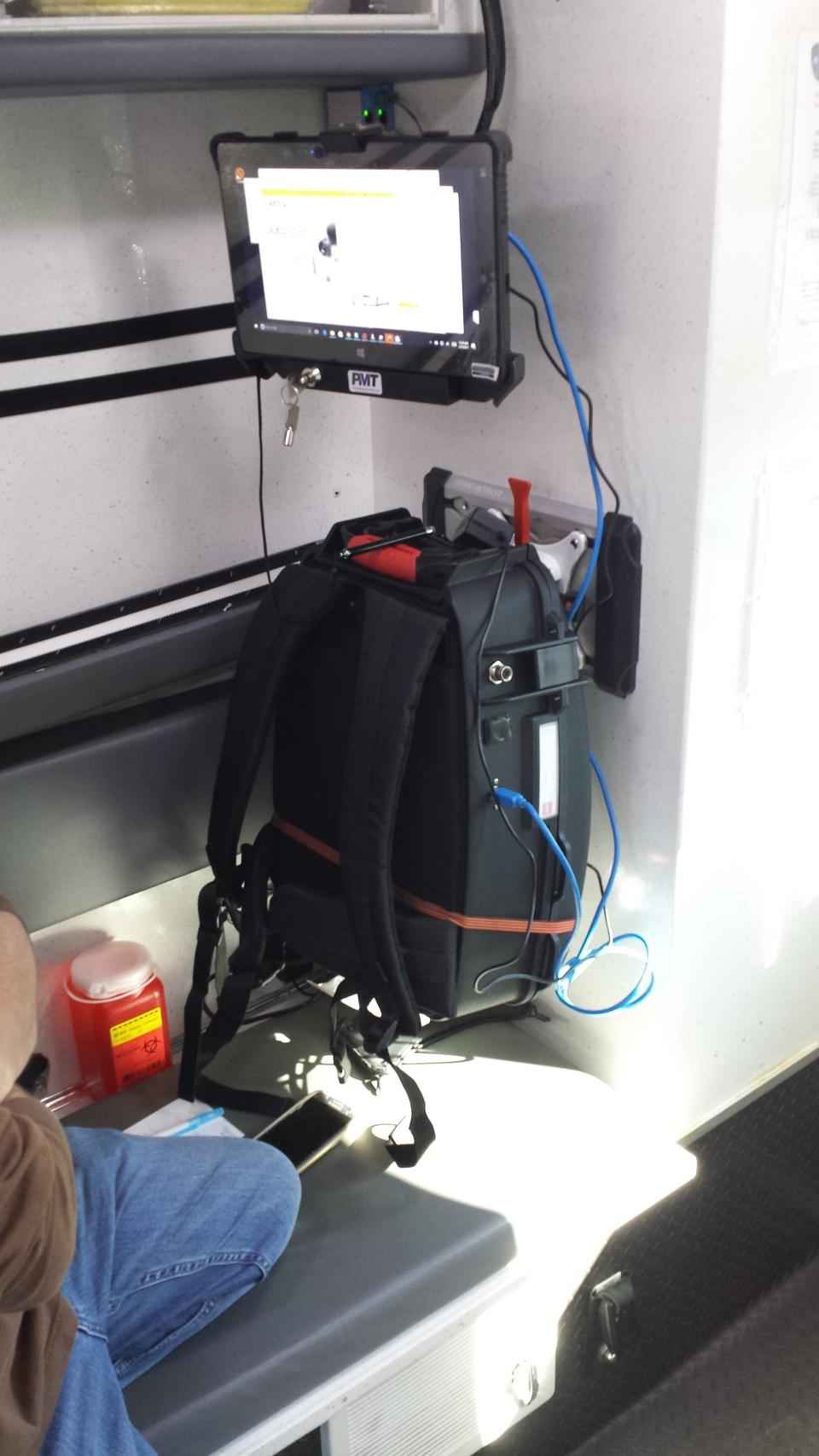Part 2: When faced with a broken EMS system, rural Texans band together to fix it.
Whenever an emergency arises and medical help is needed, a minute can mean the difference between life and death.
When you look at rural Texas, 30% of the 108 counties are left without a hospital to treat patients.
Should an emergency rise to the need for a Trauma 1 or 2 Hospital, only two counties within the 108 counties contain both level types of hospitals — Lubbock and El Paso.
However, the Texas Commission of Emergency Communication and the Texas Tech University Health Sciences Center are working on ways to address this issue together.
Nex Gen 911 Medicine
What started as a local problem in the Permian Basin region is proving to provide a solution for the whole region and has been in the works for almost 10 years.
Dr. Lori Rice-Spearman, president of TTUHSC Lubbock, said communication and technology is still a setback for rural health care. Rural providers often don’t have the technology to allow ambulances to communicate with a Trauma 1 hospital as they pass through counties, many with significant dead zones.
“Our goal is to really work in the digital innovation space in the telehealth space to make sure that we've got a very high-level network that supports these rural communities,” she said. “So that when farmers have accidents, which is one of the number one causes of death in farmers, or when there's accidents on the rig, we can have really great communication tools that get them into the level one trauma, particularly during that golden hour when we need to get them here.”

The recent Texas Legislature is achieving this with the governor's approval through House Bill 617.
However, Rice-Spearman pointed out that this bill expands on House Bill 479 of the 84th Texas Legislature in 2015, which tasks TTUHSC Lubbock and the commission to create a pilot program to address the issue.
Named “The Next Generation 9-1-1 Telemedicen Services Pilot Project,” the task was given to Billy Phillips Jr., director of the F. Marie Hall Institute of Rural Healthcare at TTUHSC.
When Phillips first looked at the project, he thought of three issues.
“We don't have the bandwidth. We don't have protocols that are current and contemporary — we were using 1960s protocols,” he said. “And we didn't really have a coordinated trauma care system.”
Working through the issues, he started addressing them one by one and communicating with advisory boards and other professionals to see what they could do.
The immediate problem — updating the protocols and outfitting the ambulances with the necessary and sometimes lacking equipment.
So in 2017, after a few hiccups along the way, TTUHSC and the commission launched the pilot program in several counties around Lubbock County, according to the Pilot program's final report.
Ambulances were rigged with broadband capabilities, cameras, smart tablets, ultrasound probes, and much more.
James Beauchamp, chairman of the Texas Commission of Emergency Communication, said the program was a great success over the year it was implemented; however, some things surprised them.
“When we floated this out there, we felt like we were gonna get a lot of people who were gung ho about to get on board with it — they were not,” he said. “They had not seen this before, even though this technology and what we're really talking about was pioneered (during) the Vietnam War.”
The other issue — cell phone connectivity.
Connecting rural Texas through broadband
At one point, Beauchamp said the commission had to map where and were able to have cell phone connectivity because many carriers are letting go of their towers — especially in Glasscock County near Midland.
He said the county is down to one cell tower, which has heightened the issue to the point the Sheriff’s office couldn’t operate there.
“Because of the federal regulation of that just and because so much of a mapping really has not been accurate — it's going to take a little bit for us to get a good handle on what cell phone service really is across the state,” he said.
The same can be said about when it comes to mapping where there will be no coverage spots for broadband, Beauchamp said.
With the pilot project only having an amount of $250,000, he said he hopes this time, funding will be around $350,000.
“We've got $250,000 now. We'll probably be going back in the next legislative session to see if we can get that bumped up a little bit,” he said. ‘In the meantime, I think we can fill some of that gap with private funds.”
Phillips is already looking ahead to hopes that with the passage of HB 617, the university can leverage the use of newer technology, more training of the staff and much more to the point it integrates the 911 system into the pilot program.
Giving the example of an oil worker out in the Permian Basin who receives a substantial head injury on the job that requires a neurosurgeon, Philips said the 911 call center should be able to tell EMS where the nearest helicopter landing pad is to airlift the patient to a Trauma 1 Hospital.

“We have solutions and we should take advantage of them so that's what we'll do with this new money,” he said.
This is one of the few projects the newly named director of TTUHSC’s new Institute of Telehealth and Digital Innovation, John Gachago, will be helping oversee along with Philips.
Already having the TTUHSC championing the efforts and innovation within the university and to the state leadership, Phillips said it is up to Gachacgo to inform the public about these advances and help connect them with solutions.
“He has a solution that is important to the overall picture of improving healthcare outcomes in West Texas,” Phillips said. “The future really rests with how successful that institute is going to be.”
More in this series
More: Part 1: COVID-19 might have exposed the cracks, but the rural healthcare system is broken
More: Part 3: Connecting rural Texas to Lubbock through telehubs, drones
More: Part 4: Helping aid the local child mental health crisis through telehealth, collaboration
This article originally appeared on Lubbock Avalanche-Journal: Fixing rural 911 services, connecting rural Texas through broadband

